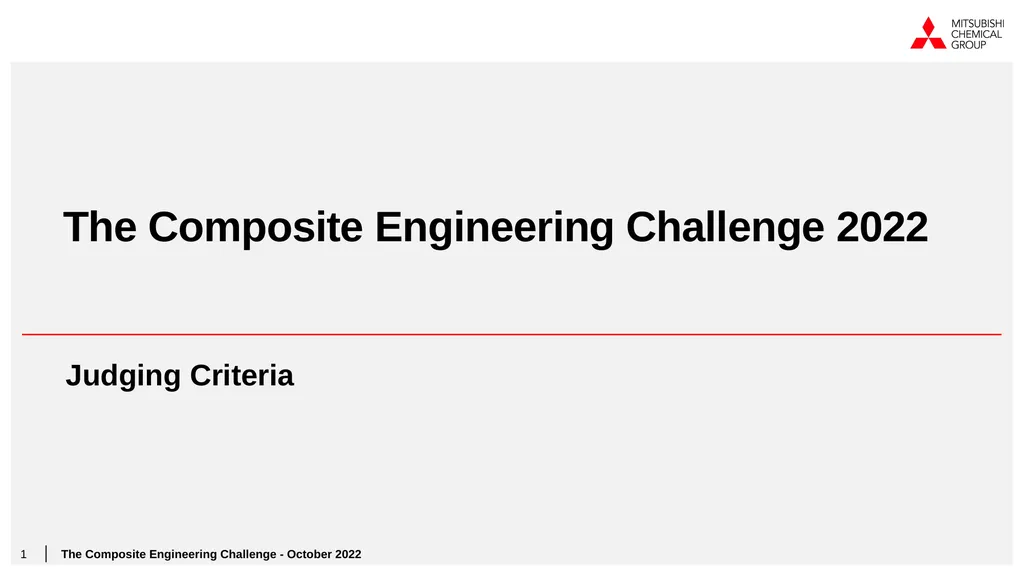Judging Criteria The Composite Engineering
Author : pasty-toler | Published Date : 2025-05-28
Description: Judging Criteria The Composite Engineering Challenge 2022 1 The Composite Engineering Challenge October 2022 All you need to know before submitting your project 2 All submissions will be judged based on several criteria Technical
Presentation Embed Code
Download Presentation
Download
Presentation The PPT/PDF document
"Judging Criteria The Composite Engineering" is the property of its rightful owner.
Permission is granted to download and print the materials on this website for personal, non-commercial use only,
and to display it on your personal computer provided you do not modify the materials and that you retain all
copyright notices contained in the materials. By downloading content from our website, you accept the terms of
this agreement.
Transcript:Judging Criteria The Composite Engineering:
Judging Criteria The Composite Engineering Challenge 2022 1 The Composite Engineering Challenge - October 2022 All you need to know before submitting your project 2 All submissions will be judged based on several criteria: Technical Feasibility Scalability (manufacturing and team) Commercial Feasibility Sustainability All criteria are equally important for the judging process. Are you still in the idea phase or have advanced further and ready to launch your product into the world? Startups and scaleups typically test their first (functional) prototypes , so called beta-versions, with a selective set of customers to get valuable feedback in an early stage of your development. This approach reduces time-to-market and avoids wasting resources (time and money). A great way to check both technical and commercial feasibility (in an early stage of development) is to create an MVP. This is a Minimum Viable Product, let’s say 60-80% ready that you’re going to test with a small audience to get early feedback. This first step is followed by multiple iteration loops. Typically, the final product (based on customer feedback) is not what you envisioned at the start of your journey. We recommend reading ‘The Lean Startup’ by Eric Ries (https://leanstartup.co/team/eric-ries/) to get more insights in this approach. The Composite Engineering Challenge - October 2022 3 Technical feasibility : TRL The Composite Engineering Challenge - October 2022 TRL 9: Qualified system with proof of successful use. Actual system proven in operational environment (competitive manufacturing). TRL 8: Qualified system with proof of functionality in the area of application. TRL 7: Prototype in use (in operational environment). TRL 6: Prototype in operational environment. Technology demonstrated in relevant environment. TRL 5: Test setup in operational environment. Technology validated in industrially relevant environment. TRL 4: Experimental setup in the laboratory. Technology validated in lab / testing environment. TRL 3: Demonstrating the functionality of a technology. Experimental proof-of-concept. TRL 2: Description of the application of a technology TRL 1: Observation and description of the functional principle Source: https://de.wikipedia.org/wiki/Technology_Readiness_Level, https://en.wikipedia.org/wiki/Technology_readiness_level Technical feasibility is judged by a team of technical experts who assess the technical readiness, often referred to as Technical Readiness Level (TRL) and the manufacturing scalability is assessed according to the Manufacturing Readiness Level (MRL). Teams that can show customer testing or have entered in commercial sales (of beta-versions or beyond) are favored, as it increases their readiness level. Although the TRL scale was developed by NASA, it has since been














